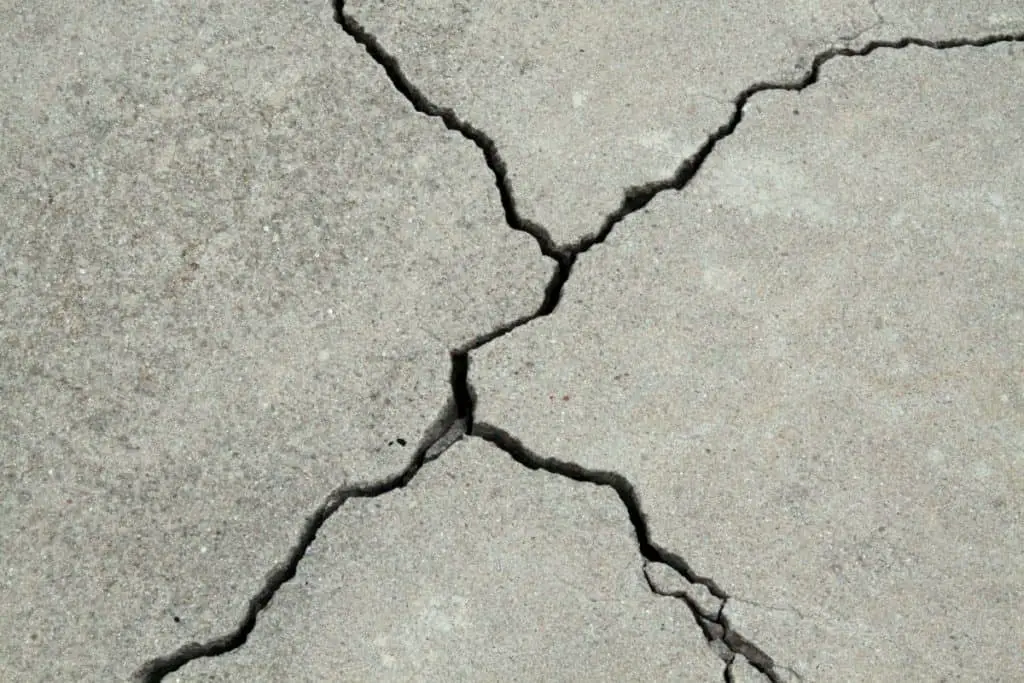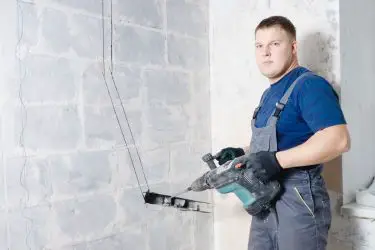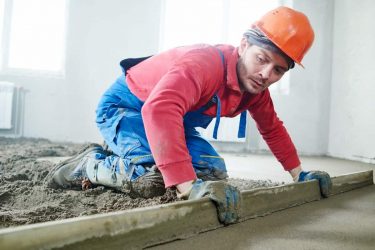Sidewalks have become a classic surface to glide on a bike, trike, or scooter, but oftentimes it leaves us wondering why every few seconds a divot interrupts the smooth ride.
The lines in a concrete sidewalk are called contraction joints and provide a place for the concrete to crack. As concrete slabs are prone to cracking, contraction joints let you regulate the location of cracking, to prevent random cracks across the slab. That way it won’t look bad and it also prevents further cracking.
Just as often as joints are seen on sidewalks, cracks accompany them. It is not a matter of if the concrete will crack, but when, and where it will choose to do so. These joints are most helpful in regulating the cracks so they appear in a specific place, rather than throughout the whole concrete slab.
Table of Contents
The Difference Between Contraction Joints and Expansion Joints
Even though the purpose of contraction joints and expansion joints is the same, to prevent the concrete from cracking in the wrong place, there are some big differences between the two types of joints.
Contraction Joints
“A contraction joint is formed, sawed, or tooled groove in a concrete structure to create a weakened plane to regulate the location of cracking resulting from the dimensional change of different parts of the structure.” Source.
Nothing is added into the concrete when a contraction joint is placed; they simply add lines as they are pouring and smoothing the concrete to create a thinner spot of materials, encouraging it to crack there when it does crack.
The grooves they place in concrete are normally about 1/4 of your concrete’s thickness deep.
They are placed every couple of feet depending on the thickness of the mixture you are pouring.
If your concrete is 4 inches thick, you would times that by 2 or 3, and install a contraction joint every 8 to 12 feet. Another example is if your concrete was 3 inches thick, you would space the joints 6 to 9 feet apart.
Expansion Joints
“An expansion joint is an assembly designed to hold parts together while safely absorbing temperature-induced expansion and contraction of building materials, and vibration, or to allow movement due to ground settlement or seismic activity.” Source.
Rather than just a groove placed in the concrete, “a pliable material is used (asphalt coated, cork, plastic) to construct these types of joints.” Source.
These types of joints are not placed after the pouring of concrete, but before the pouring takes place.
Unlike the measurements needed to install a contraction joint, an expansion joint is the same thickness as your concrete, which is another reason they are installed first.
Expansion joints are mainly used when concrete is coming into contact with a building, another slab of concrete, or a pool.
Different types of materials are used for different types of expansion joints. Where a pool coping meets a slab, caulk would probably be used, while if an expansion joint is being installed in a bridge, it will most likely be made of metal.
Installing Joints
Since there are two different types, the installation for both would be a little different. When installing an expansion joint, you would pour one slab, add in the joint, and then pour in the next.
You’ll add caulk when needed while a contraction joint is cut or grooved into the mixture during the setup process.
Tools Needed
To install or take out an expansion joint or a contraction joint you will find the following tools helpful:
- Caulk
- Caulking Gun
- Angle Grinder
- An Expansion Joint filler like A Foam Backer Rod, Spray Foam, Sand, or an expansion joint can be purchased that is made of asphalt and vegetable materials.
Why Does Concrete Crack?
The main reason for the lines is the cracks, but why does concrete crack so much anyway? We have found joints to help deal with the problem, but what about the problem itself?
One of the most common reasons that concrete cracks are because of shrinkage. This could be the reason the concrete you just poured 2 weeks ago is already cracking.
As the water from the concrete mixture evaporates and dries, it will shrink and crack.
Read more: How Much Does Concrete Shrink When It Cures?
Other reasons that concrete cracks can be a lack of joints, a cold frozen subgrade, and a variety of others including temperature changes. Once we know where the crack is coming from we may create a solution.
- Hairline cracks are small cracks only occurring on the surface. If they continue to grow and get bigger, adding caulk will help slow them down.
- Shrinkage cracks are a little larger and can be prevented by adding the correct amount of water to a mixture and adding in concrete joints in their proper place.
- Settlement cracks may start from the bottom and are often caused by uneven subgrade. To prevent them, be sure your subgrade is even, won’t settle unevenly, and is not frozen.
- Structural cracks are very large and go through the entire thickness of the concrete. To repair these, the slab will need completely replaced or professionally repaired.

Other Ways To Control Cracking
When thinking about concrete, the cracks seem to be an afterthought. In reality, if we think about preventative methods for cracking throughout the process, we will better be able to find ways to control and manage them.
When making a concrete mixture, here are some suggestions that will lead to fewer cracks:
- Don’t mix the concrete with too much water.
- Make sure to choose the right strength of concrete powder for your job.
- Always add in concrete joints!
- Allow the concrete plenty of time to cure, and don’t let it dry too quickly.
- Start with a sound subgrade, so that when it settles it is still on even ground.
As we now can see, those lines that make for a bit bumpy ride are what make the concrete crack less. They are what help the smooth part of the concrete remain smooth.
They allow the entire slab to expand and contract with temperature change. Though they may seem odd, they serve a great purpose and are needed in almost every concrete pour.



